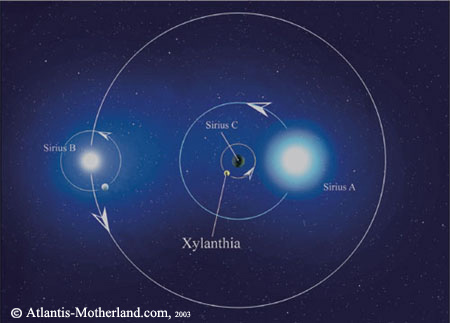The Dogon tribe and Sirius
The Dogon are a West African tribe who have known about, and worshipped, Sirius A and its twin the invisible star Sirius B, for the past 5,000 years. They are have also been aware of the planets circle the sun in elliptical orbits, the four moons of Jupiter and the rings of Saturn.
They say that Sirius B is immensely heavy, invisible, very small, yet extremely powerful. Their understanding of the two stars' orbits coincides exactly with modern astronomical findings, yet was arrived at thousands of years before it was scientifically proven. They also claim that a third star Emme Ya - Sorghum Female - exists in the Sirius system. Larger and lighter than Sirius B, this star revolves around Sirius A as well.
The Dogon also believe that approximately 5,000 years ago, Amphibious Gods, called Nommo, came to Earth in three legged space ships from the Sirius Star System. They have described perfectly the DNA pattern made by this elliptical orbit created by the two stars as they rotate around each other. They believe Sirius to be the axis of the universe, and from it all matter and all souls are produced in a great spiral motion.
Robert K. G. Temple (born in the U.S. in 1945) is an American author best known for his controversial book, The Sirius Mystery (1976; though Temple began writing it in 1967) which presents the idea that the Dogon people preserve the tradition of contact with intelligent extraterrestrial beings from the Sirius star-system. His writings on the Dogon are based on an interpretation of the work of ethnographers, Marcel Griaule and Germaine Dieterlen.[1]
Temple attended the University of Pennsylvania in Philadelphia, where in 1965 he received a degree in Oriental Studies and Sanskrit. He was a fellow of the Royal Astronomical Society and an occasional broadcaster with the BBC.
Other books by Temple include The Genius of China and The Crystal Sun. He has also written several articles for Time-Life, and has contributed to journals such as New Scientist and The Poetry Review.

Labels: xylanthia sirius robert temple stockhausen urantia dogon nommo dna


0 Comments:
Post a Comment
<< Home